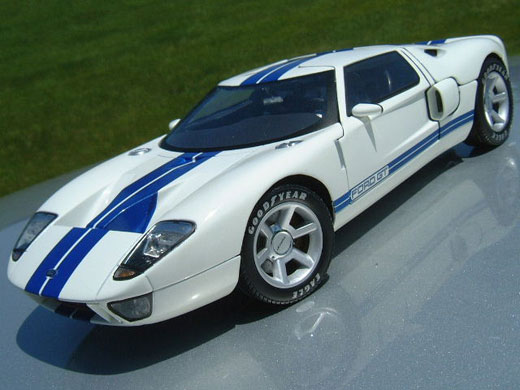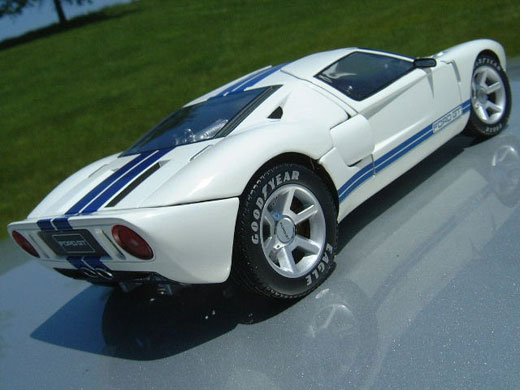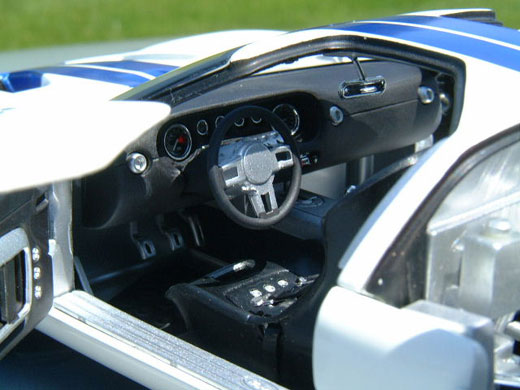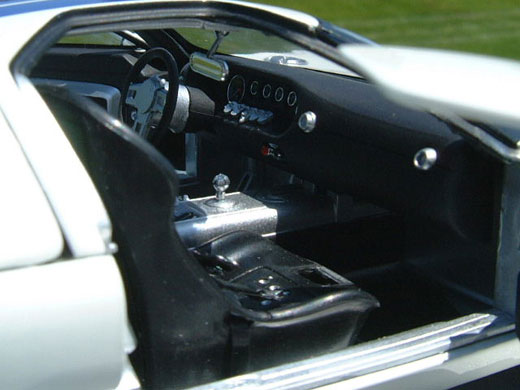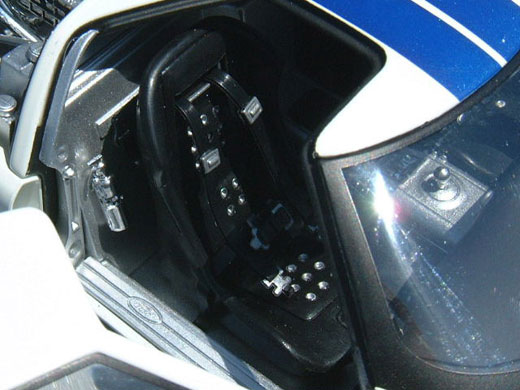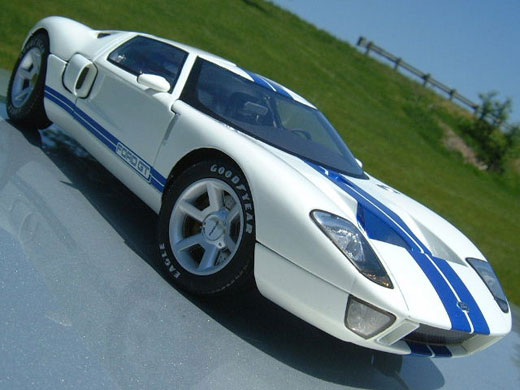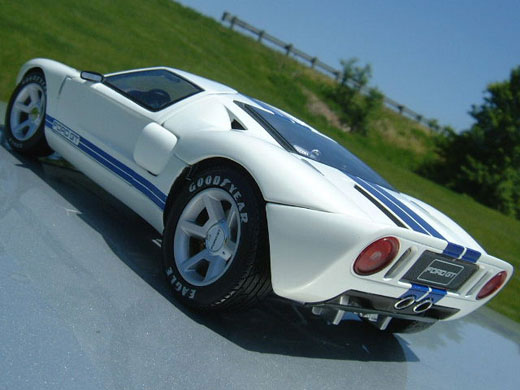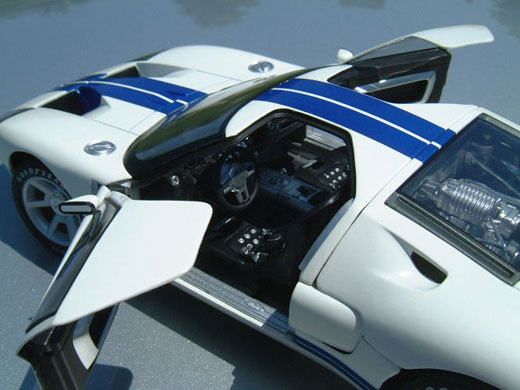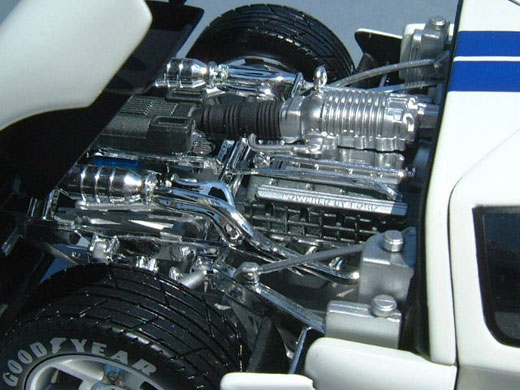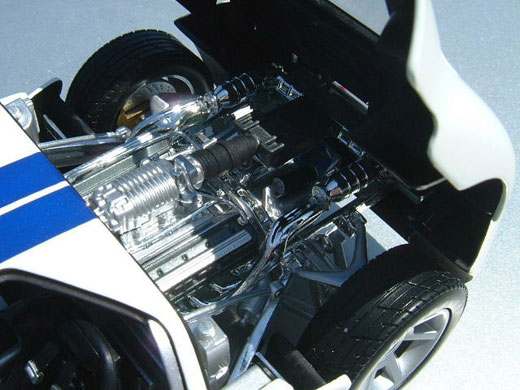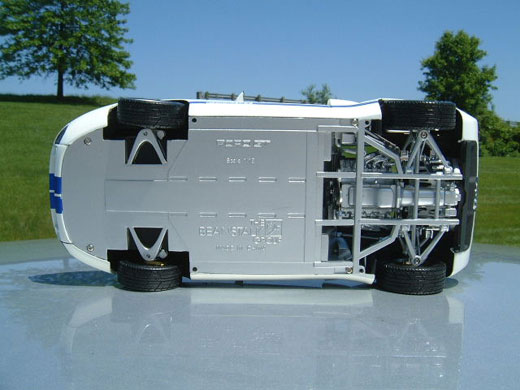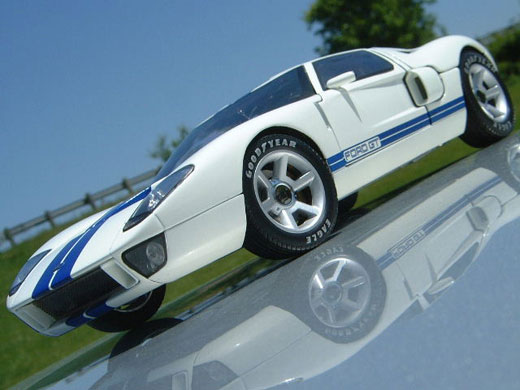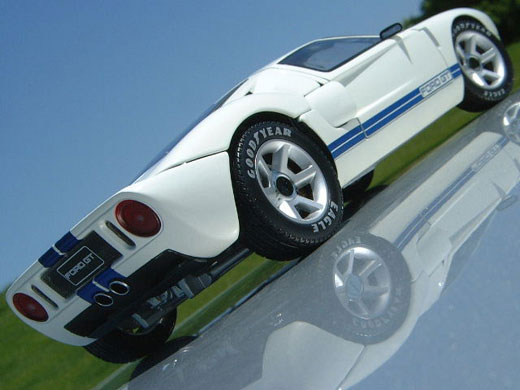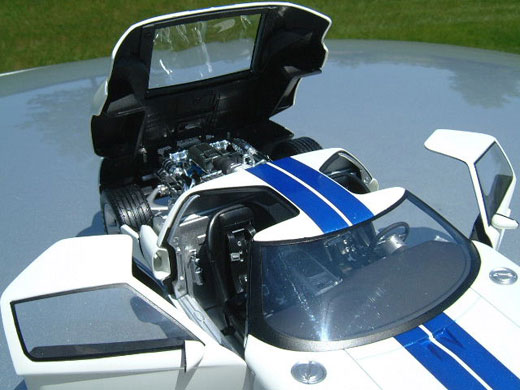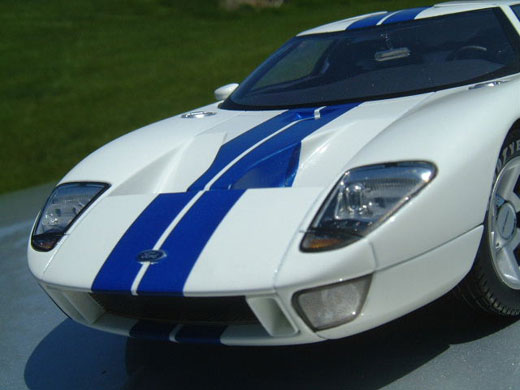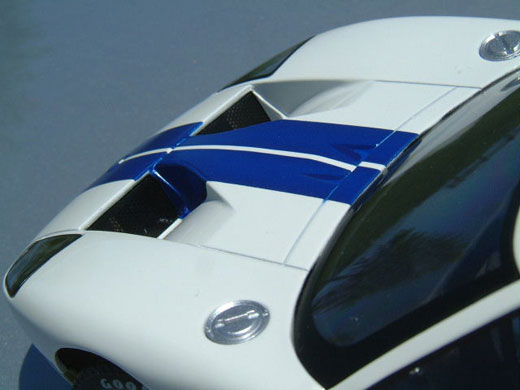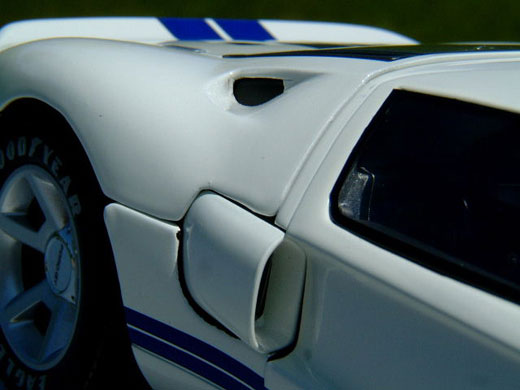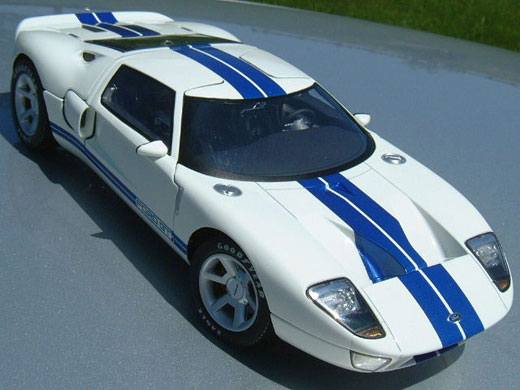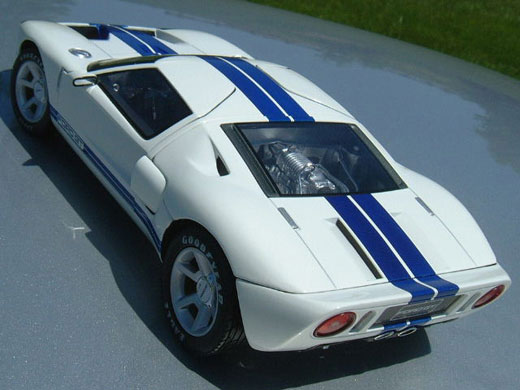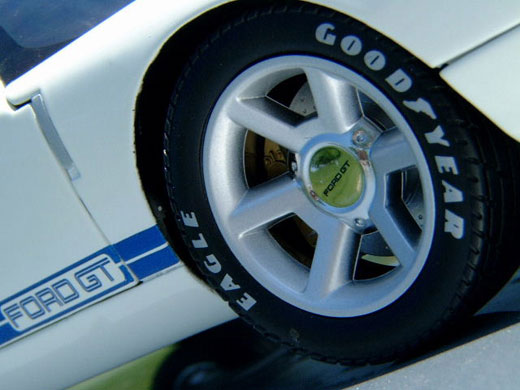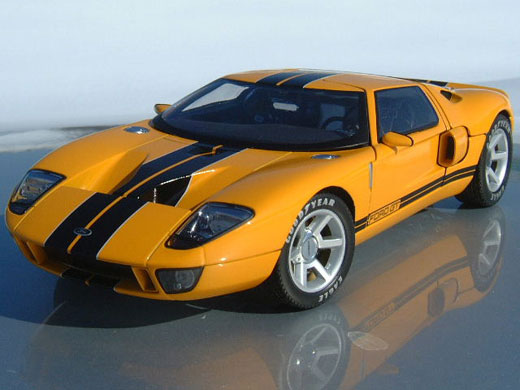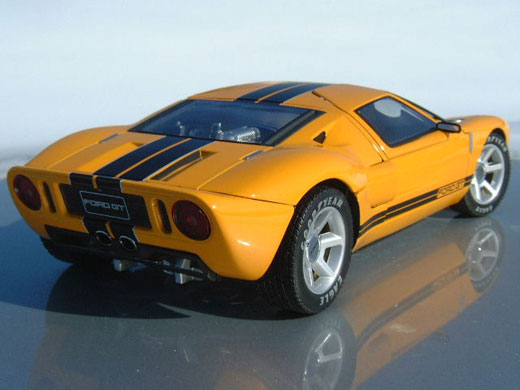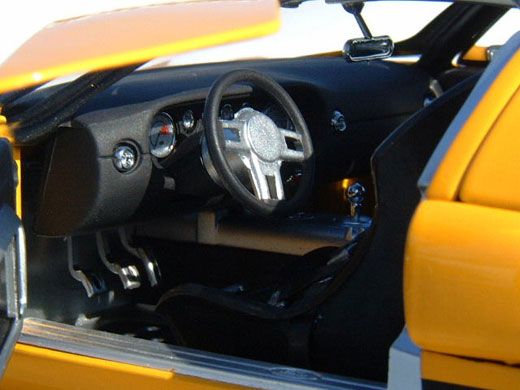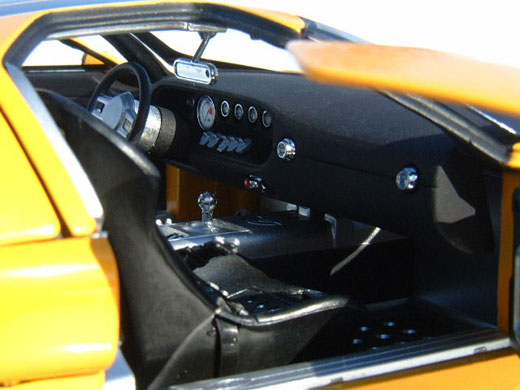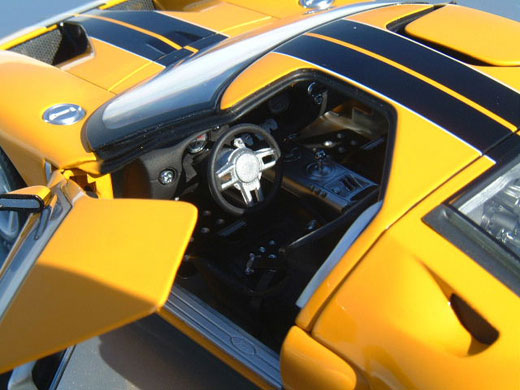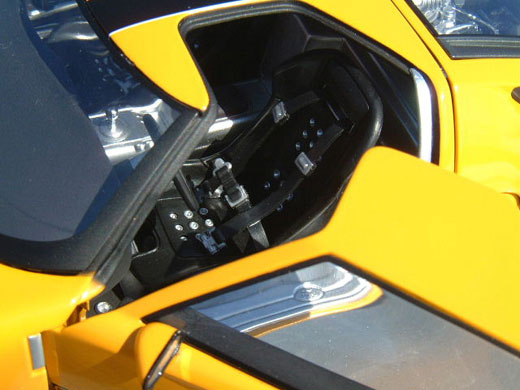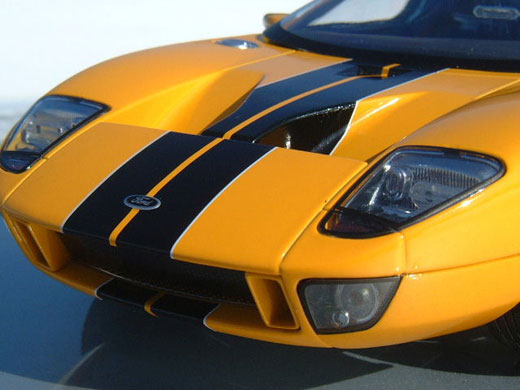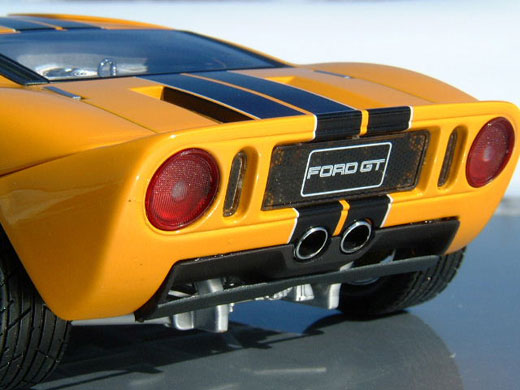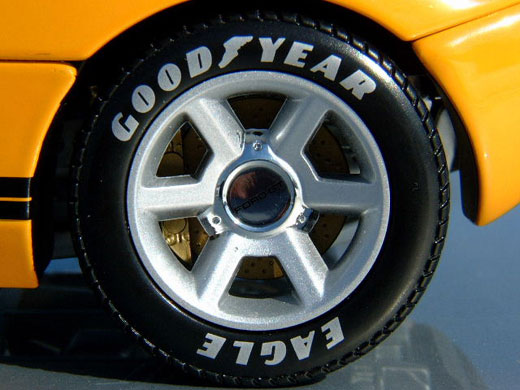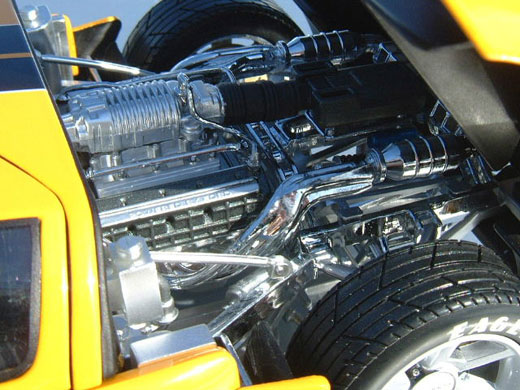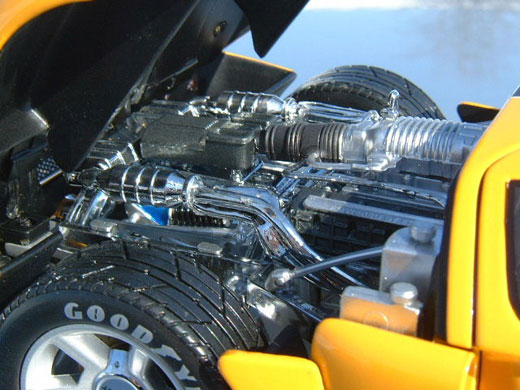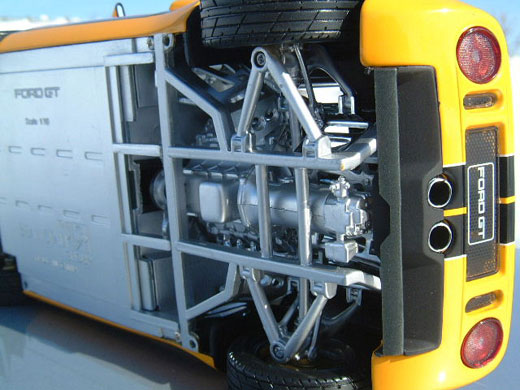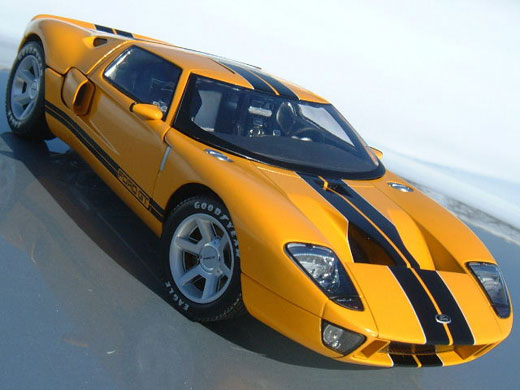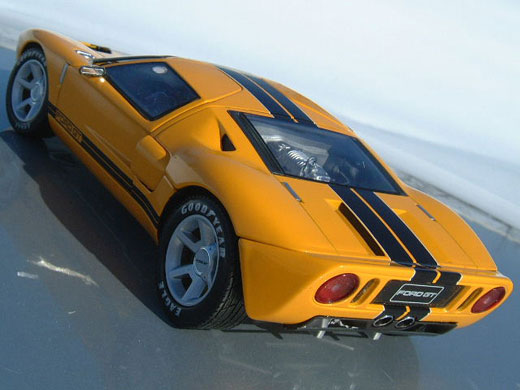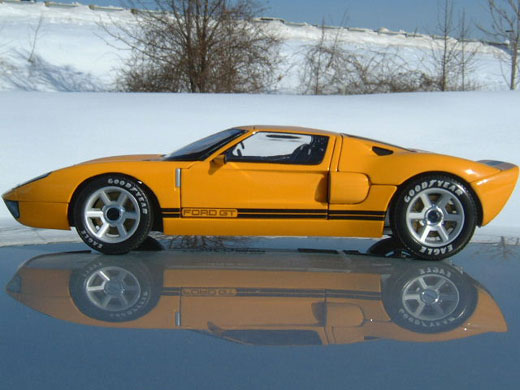|
|
 To be the best, you have to beat the best. And in the 1960’s, the best was Ferrari. The place to challenge the world conquering stallions and be crowned world champion was the 24 Hours of LeMans, the pinnacle of the racing world. Ford would not only beat the champion Ferraris, but it would totally dominate GT racing for four straight years. It’s vanquisher, the GT40. To be the best, you have to beat the best. And in the 1960’s, the best was Ferrari. The place to challenge the world conquering stallions and be crowned world champion was the 24 Hours of LeMans, the pinnacle of the racing world. Ford would not only beat the champion Ferraris, but it would totally dominate GT racing for four straight years. It’s vanquisher, the GT40.
The purpose of Fords “GT” racing program was to improve Fords image with the younger car buying generation. In 1957, Ford had joined in an agreement with the Automobile Manufacturers Association that strictly prohibited any direct manufacturer involvement in racing. The ban quickly took a toll on Fords image and many other manufacturers as well. By the early sixties, several manufacturers had pulled out of the AMA agreement, which was rapidly dissolving. Ford tried to sidestep the ban and improve their performance image by buying Ferrari, and the deal was almost made until Enzo Ferrari made a last minute withdrawal from the sale. So under the direction of Henry Ford II, Ford went to work on its massive GT racing campaign with its sights set on LeMans and its goal of defeating Ferrari. The cliché “If you can’t beat them, join them” would be rewritten by Fords GT40 – If you can’t join them, beat them.
The Ford GT40 program started life based on the new GT entrant from Lola, developed by Eric Broadley. Ford joined forces with Broadley to put together their GT racing program using the Lola as a starting platform, and in April 1964, Ford’s “GT” was unveiled to the motor press in New York. Fords LeMans racer was introduced as the GT, meaning Gran Turismo, and the 40 wouldn’t be added until much later, near the inception of the MKII model, and it stood for nothing more than the cars height in inches. Throughout the GT40’s run from MKI to MKIV, several other forces were brought onboard to insure Fords success including Carroll Shelby.
While Fords GT40 MK1 was an impressive start for a racing package, it wasn’t quite enough to be competitive. Therefore, Ford brought Carroll Shelby onboard to work on the GT40 MKII project, and what resulted was a 485hp world dominator wielding the 7-liter 427ci Ford powerplant. In its first outing at the 1966 24 Hours of Daytona, the MKII won the race with a 1-2-3 sweep over the competition. The MKII repeated the 1-2-3 sweep at the 12 Hours of Sebring and earned the “triple crown” of endurance racing by “three-peating” their 1-2-3 sweep at the 24 Hours of LeMans. These accomplishments were unmatched, making the GT40 an instant legend, in only its third year. But 1966 was only a prelude to what would go down in the history books as a 4-year domination of endurance racing.
The MKIV was the next champion in the GT40 lineup, defending the titles the MKII won in 1966 by winning the Sebring & LeMans races in 1967. What made the victory even sweeter for Ford, the MKIV was a full on American effort with the teams of Shelby American & Holman-Moody in collaboration. While the 67 MKIV solidified Fords championship status, the GT40’s success carried on with a Gulf Oil sponsored GT40 MKI returning to competition and winning both the 68 & 69 24 Hour LeMans events. Today, the words GT40 & Champion are indistinguishable.
In 2003, Ford resurrected the GT car and unveiled the 2003 Ford GT high performance concept car scheduled to hit the market in limited numbers later this year. The 2003 Ford GT is clearly inspired by its GT40 predecessors of the sixties with its striking low profile, long sloping front, and mid mounted American V8. Like the championship endurance racers, the doors on the 2003 GT cut into the roof, and the functional cooling scoops on the rear quarter panel and engine canopy are very reminiscent of the GT40 MKII’s as are the distinguishing front headlamps, although the 2003 GT is equipped with Fiber-Optic likenesses. The front fenders curve over a pair of 18 inch Goodyear Eagles and the rear wheel wells are filled with 19 inch Goodyear’s, all wrapped around custom Ford GT mag wheels, and cross-drilled & vented rotors brought to a halt with six-piston aluminum Alcon calipers at all 4 corners. The similarities continue to the GT’s interior, integrating redesigned aerated seats familiar to the GT40 MKII, as well as a very straightforward analog instrument panel.
Even though the 2003 Ford GT shares many similarities with its GT40 precursor, the 2003 GT is a completely new car, measuring in at over a foot and a half longer and four inches taller. The powerplant for the Ford GT is another new feature, built on Fords modular supercharged 5.4 liter 32 valve V8. The 5.4 V8 is an intricate arrangement of stainless steel header pipes and braided fuel lines, aluminum four valve heads, as well as the supercharger and intercooler. The performance numbers on the 2003 Ford GT exceed those of the 427 powered GT40 MKII, coming in at over 500hp and 500 lb-ft of torque, adequate enough to thrust the GT to over 200mph. All of this power meets the road by way of an RBT six-speed manual transmission.
The 2003 Ford GT joins Fords “Living Legends” lineup alongside the Thunderbird, Mustang and Forty-Nine concept car. In the case of the Ford GT, it is the ultimate living legend with the ambition of becoming the greatest sports car in the world, again.
Ford is promoting their 2003 Ford GT supercar by utilizing the talents of The Beanstalk Group who have recently produced and released a series of 1/18-scale replicas honoring the GT concept car. The accuracy of this replica is top notch amongst replicas 5 times its price. This comes in great part to the direct supervision of the Ford GT design team over the production process of the GT diecast replica. The lines of the diecast body were replicated from original Ford GT data and every detail no matter how minute has been approved by Ford GT design specialists. The result is a superb replica in an exact likeness of the original.
Available in your choice of four different color schemes - yellow & black, white & blue, red & white, or the Gulf sponsored 69 GT40 MK1 inspired turquoise & orange - each GT is an incredibly detailed replica wrapped underneath a vibrant coat of flawlessly applied paint, authentic racing & side stripes and Ford GT logos. The front end of the GT has the aggressive low profile stance of the original and the fascia is finished off with GT40 inspired headlamps and Ford logo that is a separate raised part, not a tampo. The shape of the rear side of the GT is familiar of the GT40 MKI, with the rear air scoops and integrated ducktail spoiler. The rear panel is made up of two large round taillights and small white reverse lights centered in each taillight along with dual chrome plated exhausts recessed in the center of the rear panel.
The realistic opening GT40 inspired doors cut into the roofline and unveil a richly detailed interior. Even though the scale interior appears luxurious with its mix of chrome trim and black & aluminum paint accents, the interior actually faithfully captures the look of the 2003 GT concept car with a spartan, feature free cockpit. The gauges are very straightforward and impressively legible set inside chrome-plated trim rings recessed in a barren dash. The rubber racing buckets are detailed with simulated air circulating rings and a rubber racing harness detailed with painted metal belt clasps and located behind each seat is a chrome plated fire extinguisher. The interior has been executed with great precision and the overall look is very authentic, anything but toy-like.
The engine canopy features a clear plastic window showcasing the Ford V8 and raises similar to its GT40 counterpart on a unique hinge design. The 5.4 Liter V8 is a pleasant mix of chrome plating and aluminum & cast metal paint accents making for a nicely detailed engine bay. The chrome plating, while it may look toy like, accurately represents the polished stainless steel header pipes of the GT concept car. The remaining aluminum & cast metal paint accents have been applied in the appropriate places. One of the neatest features of the engine bay is seeing how the rear suspension works. It doesn’t make use of any springs, but the suspension glides by way of several different control arms. The opening engine canopy also gives a great view of the detailed Goodyear Eagle tires and gold cross-drilled rotors & brake calipers. When the Goodyear tires turn the custom Ford GT mag wheels, the rotors turn with the wheels through the stationary calipers.
As the box copy declares, the 1/18-scale Ford GT from The Beanstalk Group is truly a replica in the eyes of the original. What is most amazing about this replica is its price point. The Ford GT is filled with as much detail as cars well over the $100 bracket, but this exquisite replica can be had for just under $30. At that price, the BSG Ford GT is easily going to be a huge success, and there really isn’t any reason this car shouldn’t be considered a MUST HAVE for everyone.
Keep an eye on The Beanstalk Group. Their recent diecast offerings have been very promising, and they have announced a few more releases for later in the year. To be the best, you have to beat the best, and with the pace the Beanstalk Group is setting for themselves, they are on the fast lane to the head of the class
|
Ford GT40 (Beanstalk Group) Part II
|
|
Total diecast model cars in Ford GT40 (Beanstalk Group) Part II: 0
|
|




